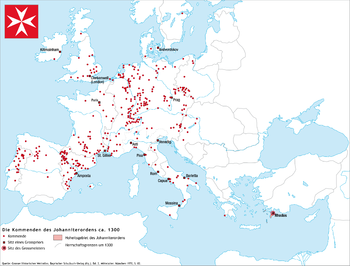
Slagelse is a town on Zealand, Denmark. The town is the seat of Slagelse Municipality, and is the biggest town of the municipality. It is located 15 km east of Korsør, 16 km north-east of Skælskør, 33 km south-east of Kalundborg and 14 km west of Sorø.

Hans Tausen (Tavsen) nicknamed the “Danish Luther” was the leading Lutheran theologian of the Danish Reformation in Denmark. He served as Bishop of Ribe and published the first translation of the Pentateuch into Danish in 1535.
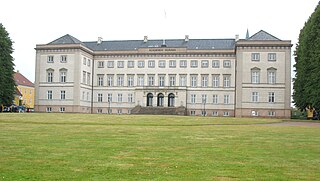
Sorø is a town in Sorø municipality on the island of Zealand in east Denmark with a population of 8,271 (2023). It lies on the northeastern shore of Sorø Lake. The municipal council and the regional council are located in Sorø.

Slagelse Municipality is a kommune in Region Zealand on the west coast of the island of Zealand in Denmark. The municipality covers an area of 571 km². The municipality borders Kalundborg Municipality to the north, Sorø Municipality to the north-east, Næstved Municipality to the south-east and connects to Nyborg Municipality via the Great Belt Bridge.

The Church of Our Lady is the Lutheran cathedral of Copenhagen. It is situated on the Frue Plads public square in central Copenhagen, next to the historic main building of the University of Copenhagen.
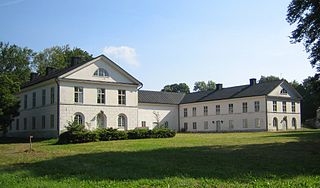
Herrevad Abbey was a Cistercian monastery near Ljungbyhed in Klippan Municipality, Scania, in the south of present-day Sweden, but formerly in Denmark until 1658. It is now a country house known as Herrevad Castle.
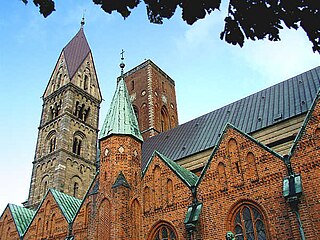
The former Diocese of Ribe was a Roman Catholic diocese in Southern Jutland, Denmark. The diocese was established in 948, and dissolved in 1536 during the Protestant Reformation. Within the newly established protestant Church of Denmark, the Diocese of Ribe effectively replaced its Roman Catholic precursor.

Mariager Abbey was a Bridgettine abbey founded in 1430 which became an important pilgrimage site, in the present town of Mariager in northern central Jutland, Denmark.

Esrum Abbey, also Esrom Abbey, was the second Cistercian monastery founded in Denmark, located near Hillerød in Region Hovedstaden, on the island of Zealand (Sjælland), on the north side of the Esrum Sø near Esbønderup and Græsted.

St. Catherine's Priory, Roskilde was a Danish priory of Dominican friars located in Roskilde. It was established in 1231 and dissolved during the Reformation. In 1699, the private house which replaced the Priory, became the Lutheran Roskilde Adelige Jomfrukloster, a women's collegiate foundation.
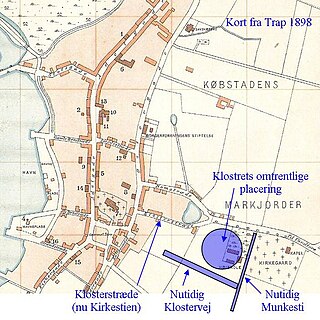
Nysted Friary, located in Nysted, on the island of Lolland in southern Denmark, now in Guldborgsund municipality in Region Sjælland, was the last occupied Franciscan friary in Denmark after the Reformation.
St. Peders Kloster, later called Skovkloster, was an important early Benedictine house at Næstved, Denmark, active in 1135-1559.

Halsted Priory, formerly a small Benedictine house, is a manor house and estate located close to Nakskov on the island of Lolland in southeastern Denmark. The estate was renamed Juellinge when the Barony of Juellinge was restored for Jens Juel-Vind in 1721, but its old name was restored when the barony was dissolved in 1921. Holsted Priory is still owned by the Krag-Juel-Vind-Frijs family. The Neo-Gothic main building is from 1847-49. It is flanked by Halsted Church to the north and the old main building from 1591 to the south. The old main building has been renovated with support from Realdania and is now operated as a local cultural centre. The Baroque-style park covers approximately 6.5 hectares of land. The estate is also home to a golf club.
St. Canute's Abbey, Odense, a Benedictine monastery, was built to support the pilgrimage centre for the relics of the royal Danish martyr Saint Canute, and was the successor to the priory of St. Mary and St. Alban, Denmark's earliest monastic house. Located in Odense, it was the island of Funen's most important medieval religious institution.
St. John's Priory, Viborg, was a monastery of the Knights Hospitaller in Viborg, Denmark.
Slangerup Abbey was a nunnery first of Benedictine nuns, then of Cistercian nuns. It was in operation between 1170 and 1555 and was located in Slangerup, Denmark. It has left no visible remains.

The Church of the Holy Spirit in Copenhagen, Denmark, is one of the city's oldest churches.
Valbygård is a manor house and estate located four kilometres northwest of Slagelse, Denmark. Created by Joachim Castenschiold in 1874 from land that had previously belonged to Antvorskov Abbey, the estate was in 1846 acquired by August Willads Bech and has since then remained in the Bech family. The current, Renaissance Revival style main building was built for August Willads Bech in 1855. It was listed on the Danish registry of protected buildings and places in 1996. The estate covers 1,100 hectares of land.
Store Frederikslund is a manor house and estate located eight kilometres northeast of Slagelse, Slagelse Municipality, Denmark. It is one of several estates that was established when Antvorskov Cavalry District was sold in public auction. It was established by General Hans Henrik von Eickstedt in 1783 and later owned by the Castenschiold/Grevenkop-Castenschiolds family from 1786 to 1995. The Neoclassical main building from the 1780s was probably designed by Andreas Kirkerup. It was listed on the Danish registry of protected buildings and places in 1918.

Saint Peter's Church is a Lutheran church located in the center of Slagelse, Denmark. The congregation was originally part of the Roman Catholic Church, but was converted to Lutheranism during the Reformation.

